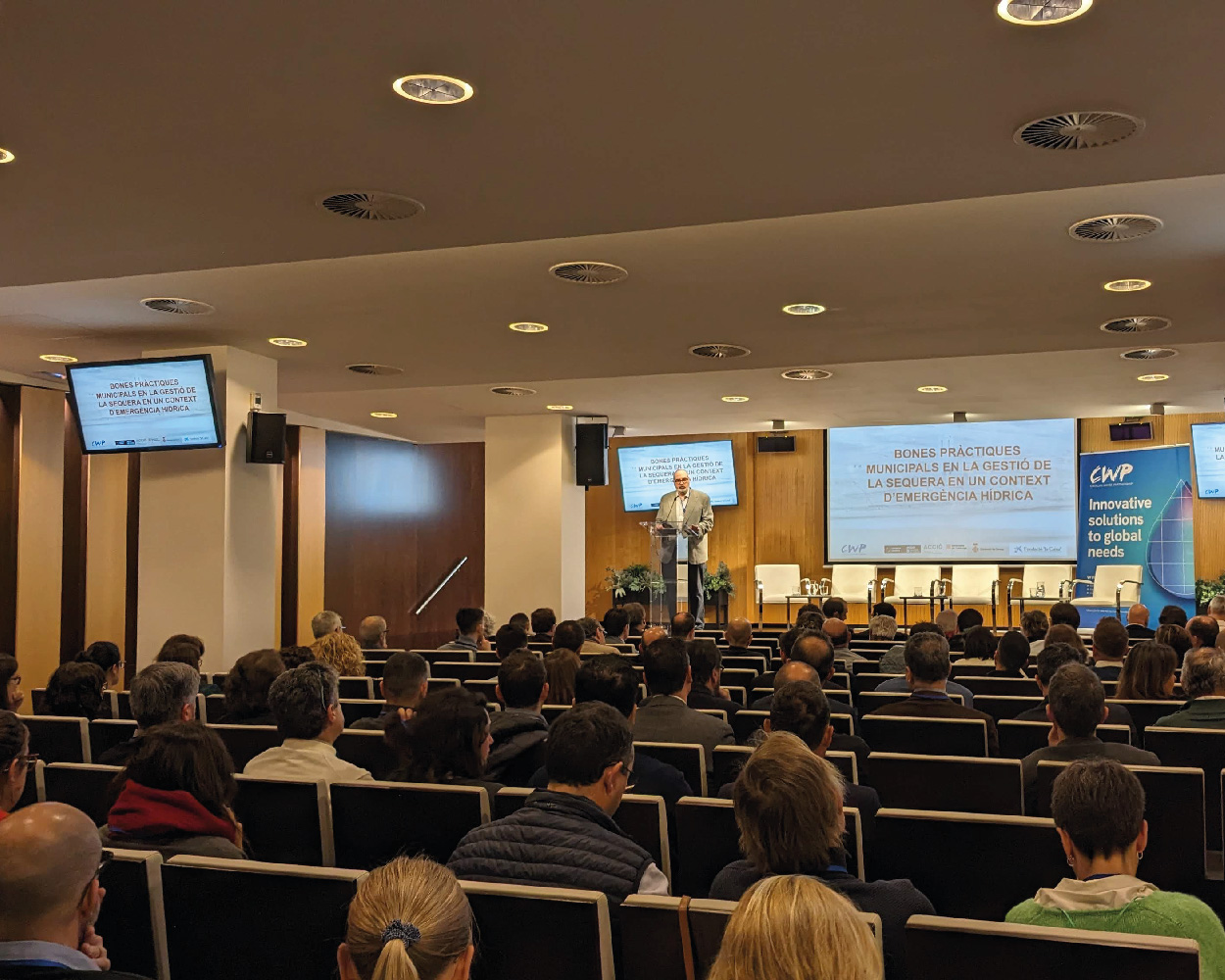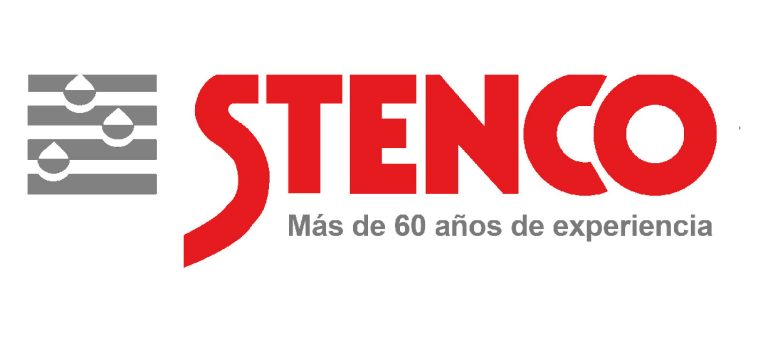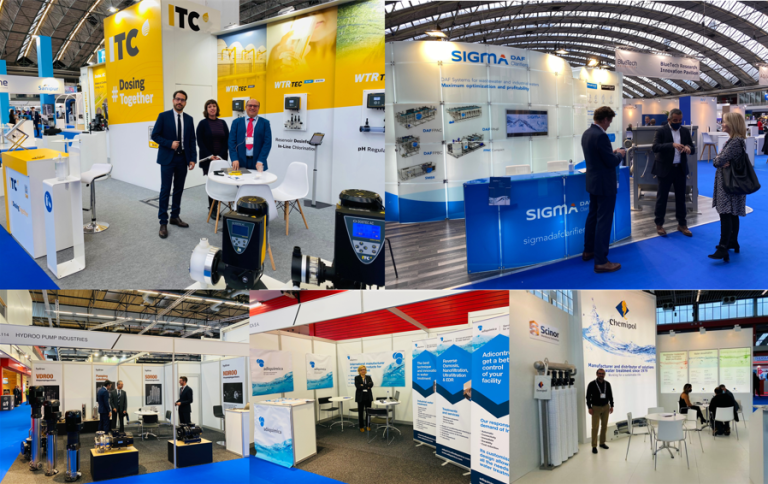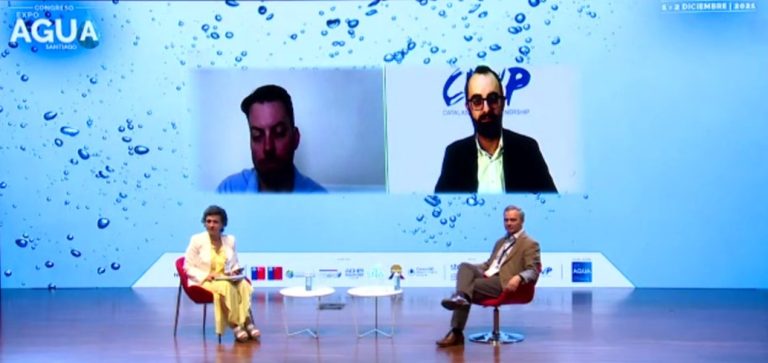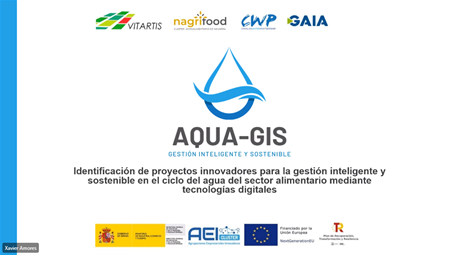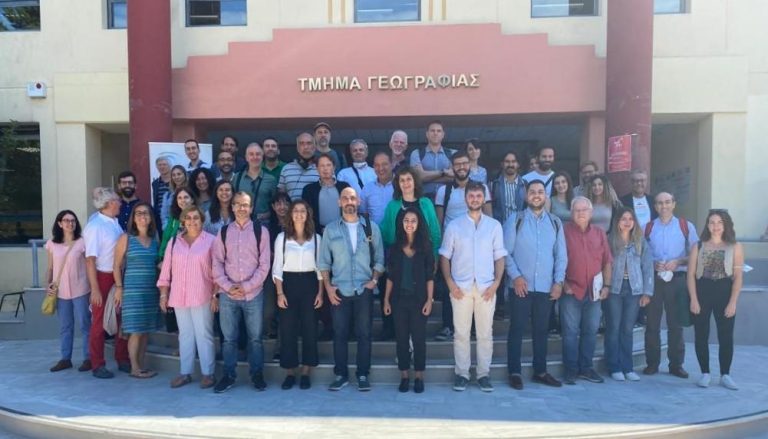200 representatives of water management in the municipalities share good practices to deal with the drought
- Cases have been shared in municipalities such as Muntanyola, Peralada, Caldes de Malavella, Vic, Mataró, Terrassa, Manresa, Barcelona and the Metropolitan Area
- El CWP s’ha ofert com a espai de trobada per conèixer casos d’èxit, problemàtiques i de desenvolupament de pilots per provar tecnologies innovadores
On January 31, the day “Good municipal practices in drought management in a water emergency context” was held at the CaixaForum Macaya, which was attended by 200 people in a hybrid format. The goal of the day was to share the actions that have been carried out in municipalities in Catalonia, both large and small, to deal with the drought as well as to present technological solutions from entities associated with the cluster to help improve the efficiency of the network, digitize or promote reuse among others. The event began with a welcome from the president of the CWP, Jordi Cros, in which he wanted to highlight the role of the Catalan Water Partnership in helping all actors in the water sector and users of this resource in measures to ‘savings, efficiency and reuse in a time as complicated as the current one.
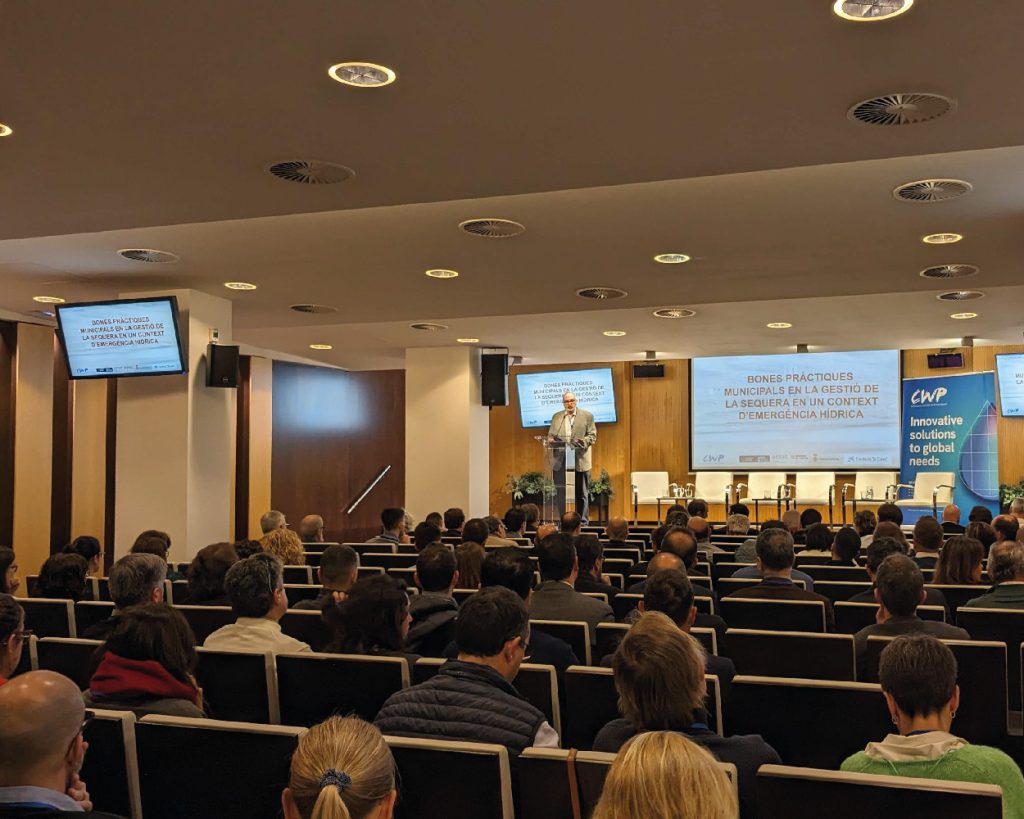
Xavier Amores, director of the CWP, who presented different projects in which the entity is involved and highlighted those focused on improving water management in municipalities but also with sectors such as industry, tourism or services that have their activity in these. He also explained that the CWP has organized around thirty events focused only on the drought with more than 3,600 attendees throughout the last year and around fifteen innovative projects in this area.
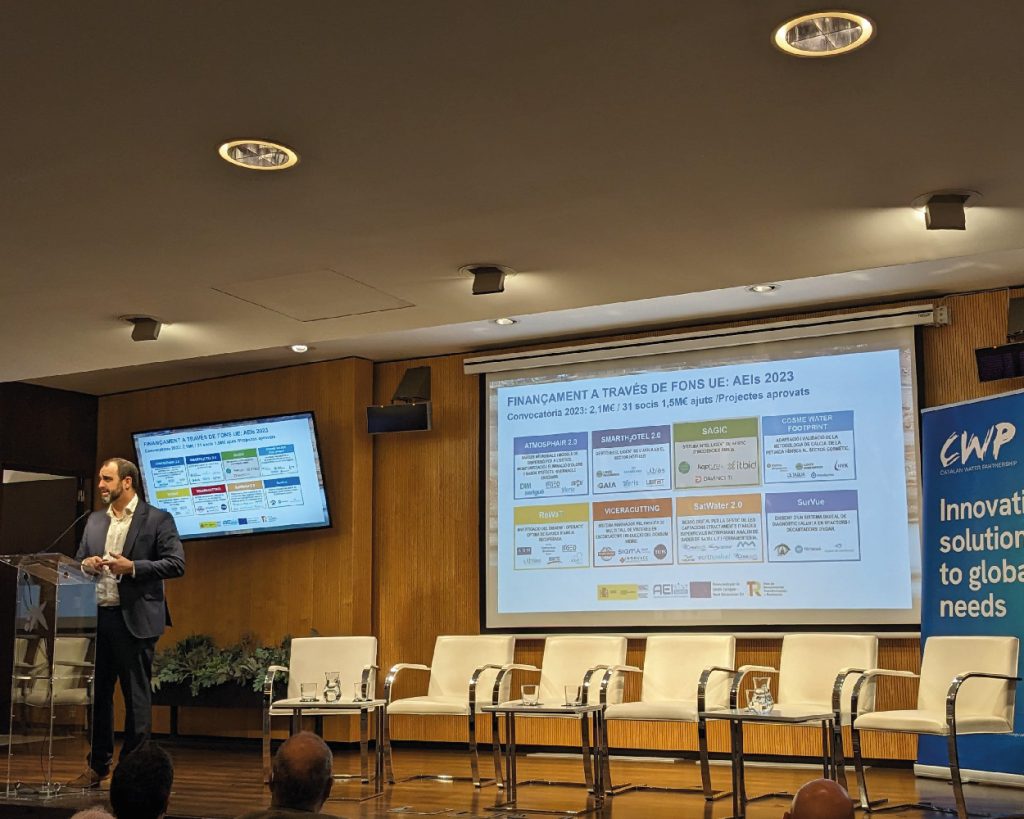
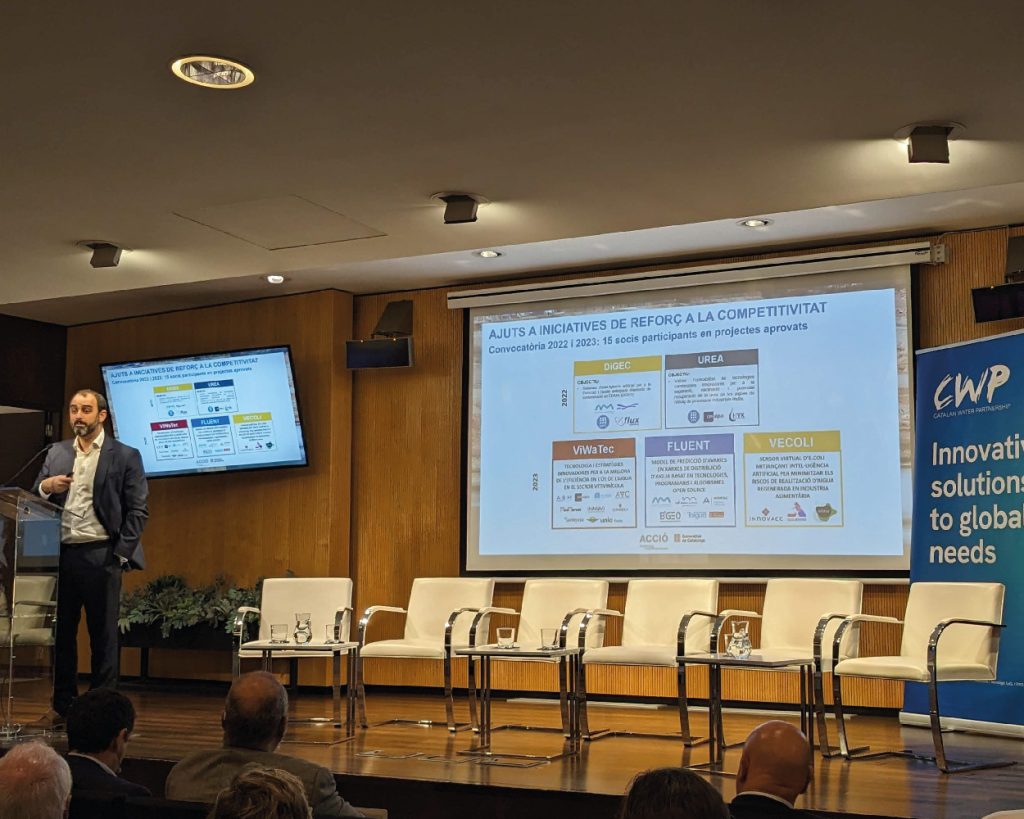
The program was followed by a presentation by Samuel Reyes, director of the ACA, who spoke about how to face the challenges of the climate emergency and drought from the local world and the role of the ACA through some of the aid intended for the municipal world. He emphasized the importance of the work from the municipal world, also of the commitment to digitization, investments, the speed in executing these works taking advantage of all the incentives and that given the time of the start of many municipal legislatures it was necessary to rethink the price of water and which investments should the Councils prioritize given the severity of the drought. In order to provide an overview of different good practices, two blogs were created, one in which cases in small municipalities were exposed, and the second in which initiatives carried out in medium and large municipalities were discussed. In the first case, we were able to hear the cases of: Muntanyola, by Salvador Graus technical director of Aigües de Vic, Peralada, by Jordi Johé responsible for Girona Nord d’Aqualia and Caldes de Malavella, by Sergi Mir i Miquel first lieutenant of Mayor of Caldes de Malavella. In the case of this first block, it should be noted that, in a relevant way in small municipalities, a good knowledge of the system, telereading and the establishment of indicators that allow it to be followed up, is key to improving efficiency, as well as promoting public awareness and public-private collaboration. It was also highlighted how municipalities that were not obliged by their size have made drought plans that have helped to deal with the current situation or how, thanks to technology, yields close to 85% were being achieved.

The day continued with the presentation of internships completed in five large cities in Catalonia: Vic, by Guillem Treserra d’Aigües de Vic, Mataró, by Raquel Compta, managing director of Aigües de Mataró, Terrassa, by Ramón Vázquez, manager de Taigua, Manresa, by David Güell, director of operation of Aigües de Manresa and Barcelona and the metropolitan area by Josep Lluís Armenter, coordinator of the drought plan of Aigües de Barcelona. Among the various good practices, it is necessary to highlight the modernization of management systems by prioritizing investments in digitization and sensorization, personalized and user-centered awareness campaigns, effective coordination between all the agents involved, designing management systems based on data, opt for alternative water sources such as regenerated water and reuse. Likewise, the commitment to regeneration was also highlighted, with emblematic projects such as the potable indirect reuse of the Llobregat river or yields in some municipalities close to 90%.

To end the round tables, we also wanted to give a voice to those companies in the cluster that provide solutions applicable to municipalities and that through technology and digitization promote saving, reusing and saving water. We were able to listen to the presentations by David García, director of supplies at Aigües de Catalunya who spoke to us about the digitization of services to improve the reliability of data and its management. Àngel Dutras, director of Prodaisa, who explained that specific actions are needed in each of the areas of resource management in order to face the global challenge of drought. Santi Singla, responsible for new technologies at Hidroglobal, who explained the application of new technologies for the reduction of unregistered water. The solution presentation table was closed by Alberto Jiménez, director of ADASA’s digital solutions area, who presented a solution for the detection, location and sizing of leaks using artificial intelligence.
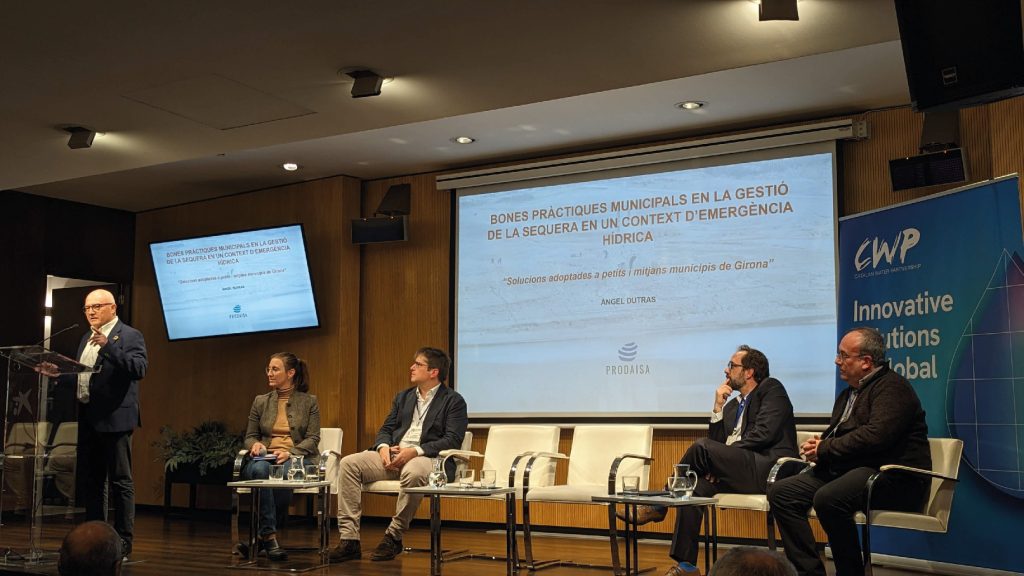
The conference served to present those cases that are an example of good water management, a critical element in the context of the water emergency and drought that Catalonia is currently experiencing. In addition, it acted as a meeting point for different public entities such as city councils, county councils or deputations with the business sector, being a good example of public-private cooperation between various entities in the worst drought in Catalonia in recent decades.
